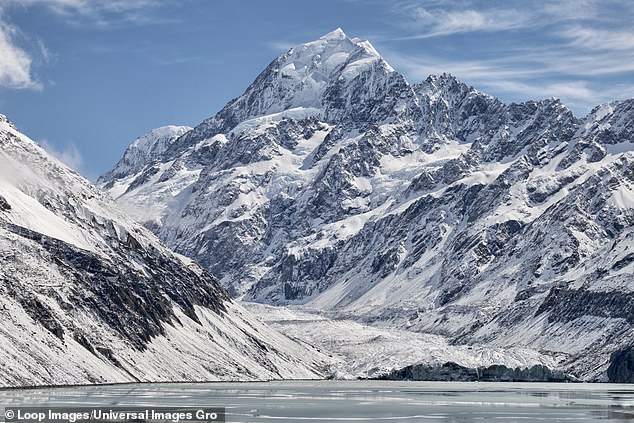- DO YOU KNOW MORE? EMAIL TIPS@DAILYMAIL>COM
Three climbers, two Americans and one Canadian, missing for five days on Aoraki, New Zealand’s highest peak, are believed to have died in a fall, authorities said Friday.
The men’s bodies were not found. But based on footprints spotted in the snow during an aerial reconnaissance and items believed to belong to them recovered from the slopes this week, the search for them is over, police area commander inspector Vicki Walker.
The Americans, Kurt Blair, 56, of Colorado, and Carlos Romero, 50, of California, were certified alpine guides, according to the website of the American Mountain Guides Association, a nonprofit organization. New Zealand authorities have not identified the Canadian climber at the request of his family.
The men flew to a cabin mid-mountain on Saturday to begin their ascent and were reported missing on Monday when they failed to arrive to meet their pre-arranged transportation after the climb. Hours later, searchers found several items related to the climb believed to belong to the men, but there was no sign of them, police said.
The search was halted for three days due to harsh weather conditions in the area. On Friday, drone operators spotted footprints in the snow and more items that authorities believe belong to the men.
“After reviewing the number of days the climbers have been missing, without communication, the items we have recovered and our reconnaissance today, we do not believe the men have survived,” Walker said. “We believe they have suffered a fall.”
The search would resume if more evidence came to light, but the men’s deaths have been referred to a coroner, Walker added.
Two Americans and one Canadian are missing and presumed dead after disappearing from the summit of Mount Cook in New Zealand on Saturday morning (pictured is victim Kurt Blair)

Mount Cook, also known as Aoraki, is the highest mountain in New Zealand. The three men were reported missing on Monday after missing their return transportation.
Aoraki is 3,724 meters high and is part of the Southern Alps, the picturesque, icy mountain range that stretches across the South Island of New Zealand. A settlement of the same name at its base is a destination for domestic and foreign tourists.
The peak is popular with experienced climbers. Its terrain is technically difficult due to crevasses, avalanche risk, changing climate and moving glaciers.
Since the beginning of the 20th century, more than 240 deaths have been recorded on the mountain and in the surrounding national park.

